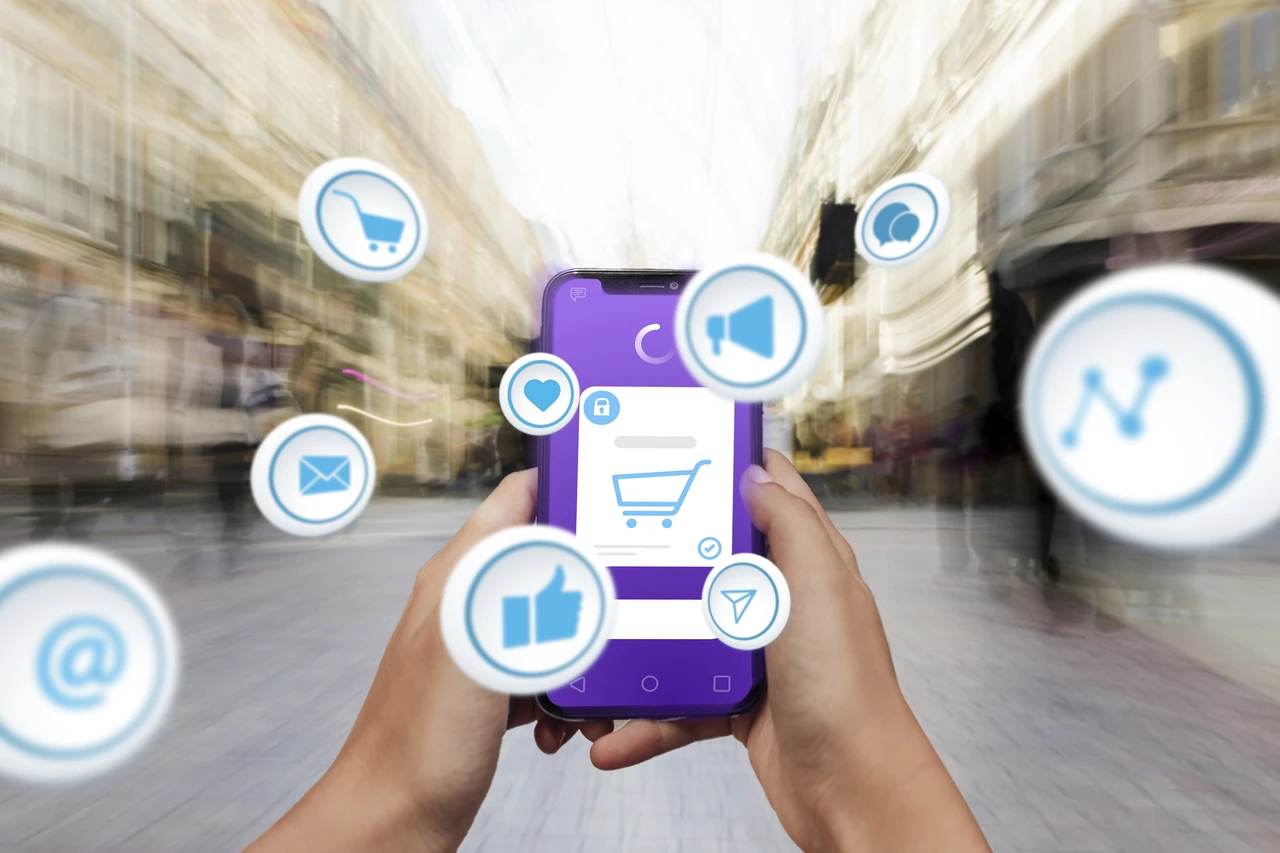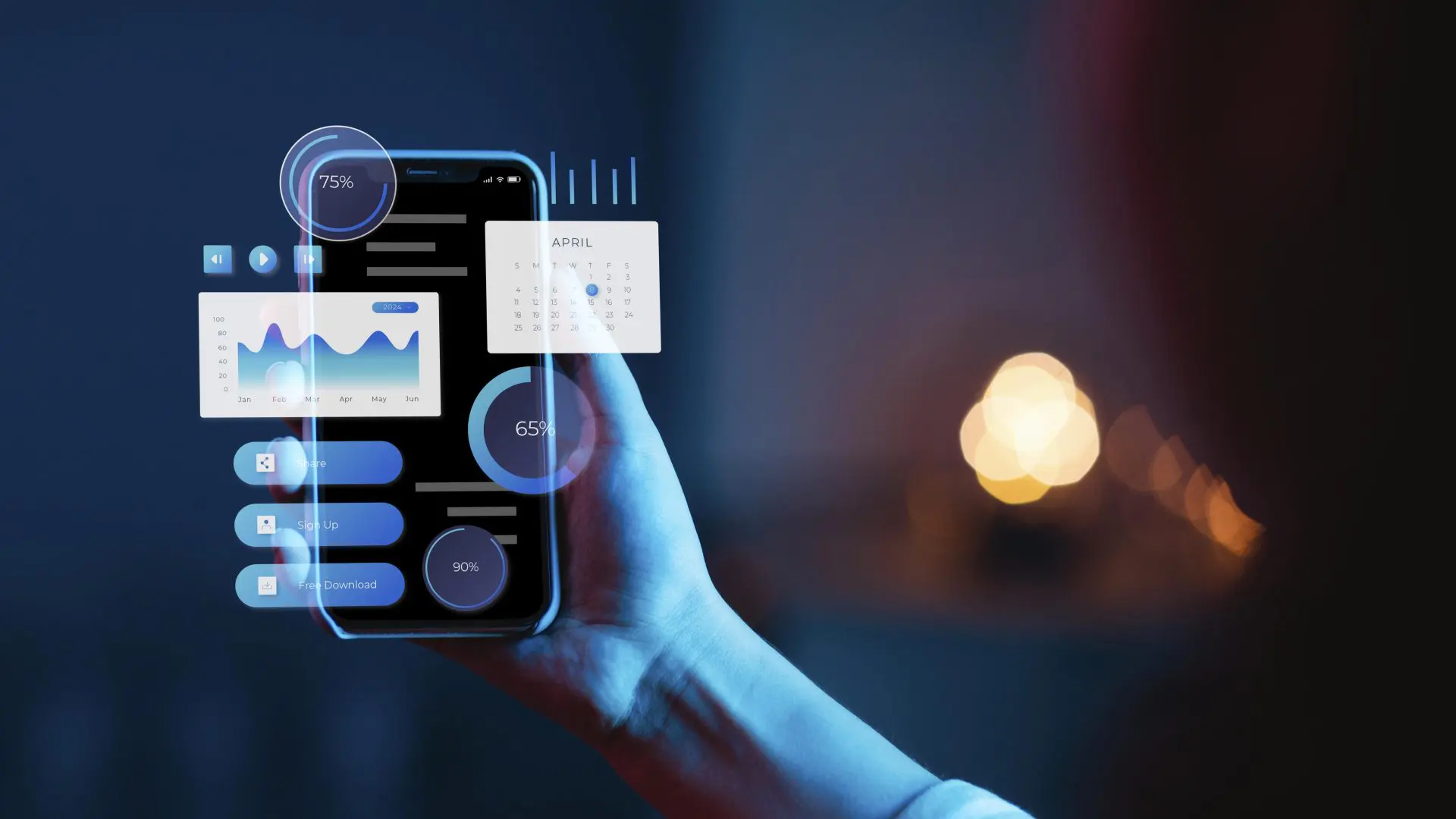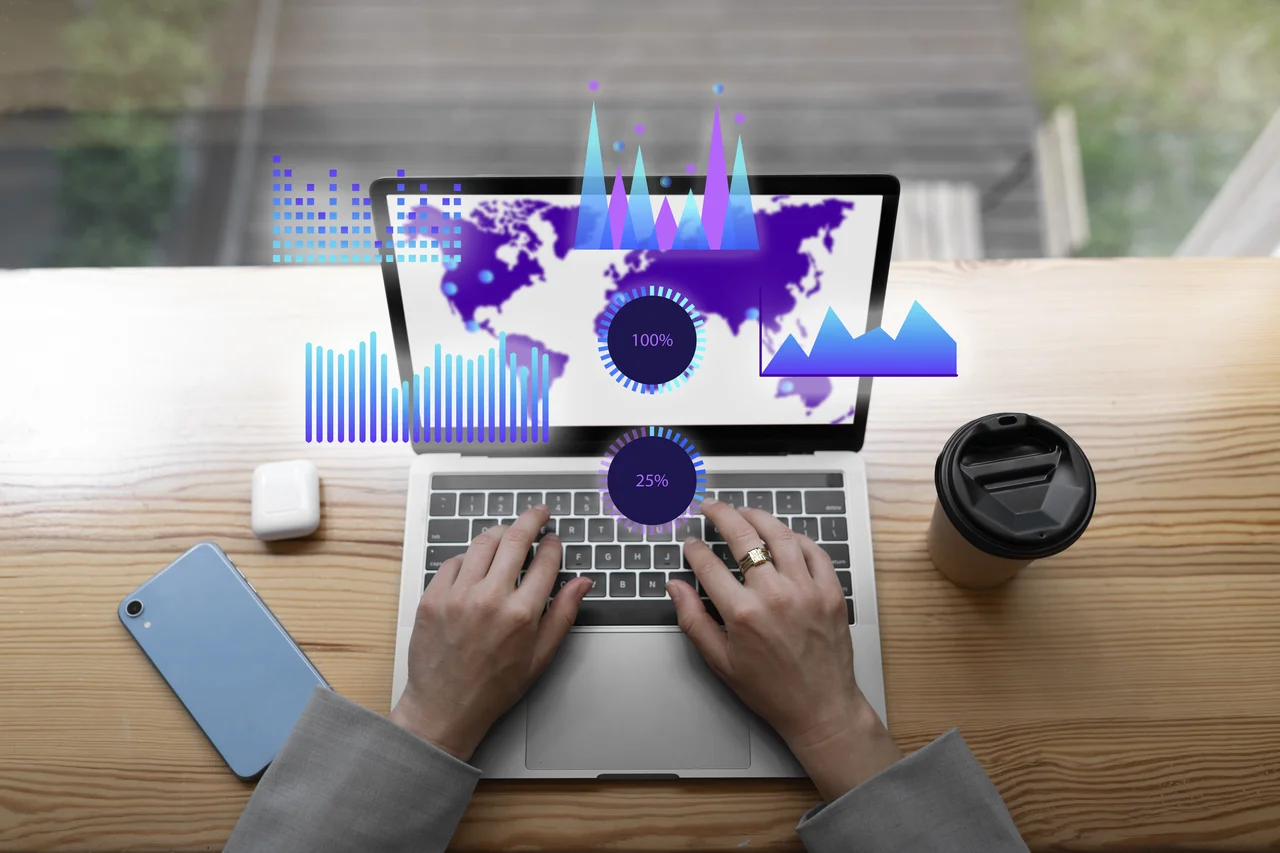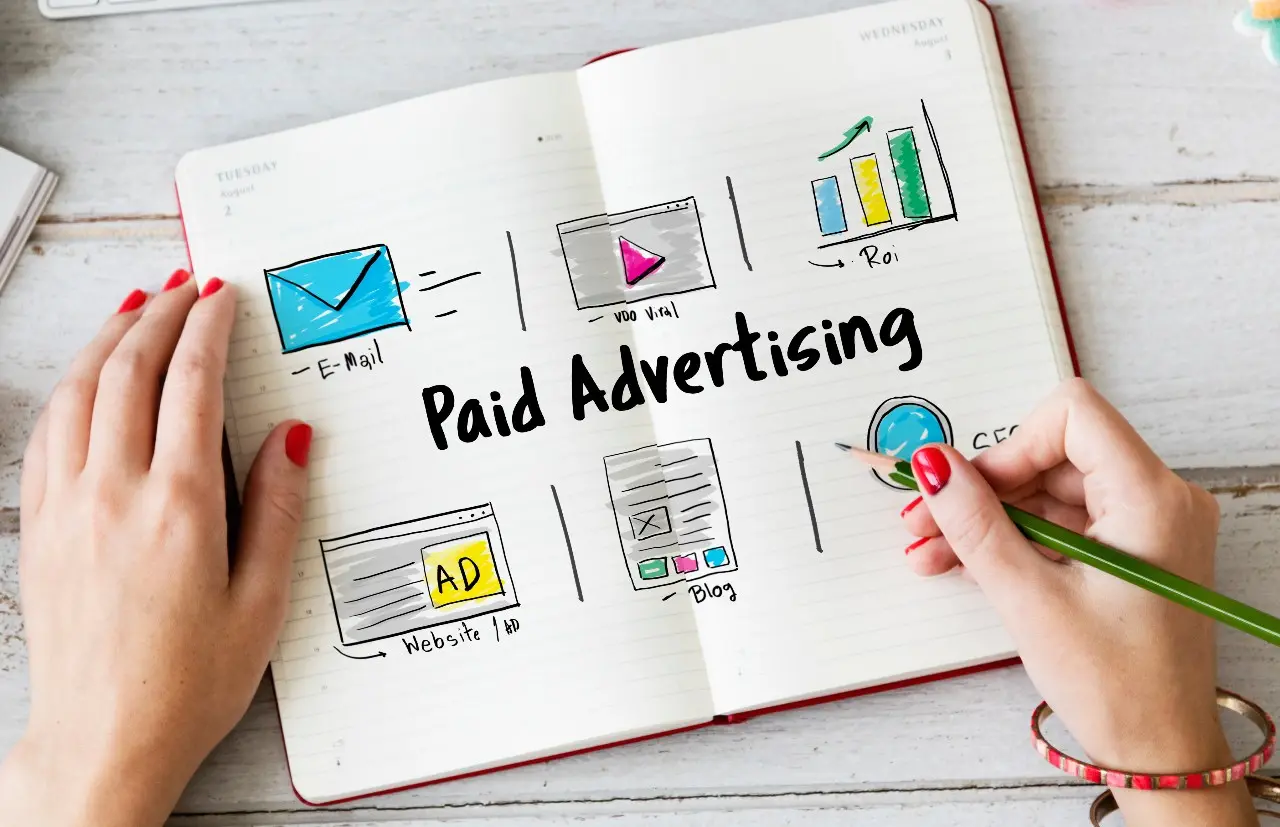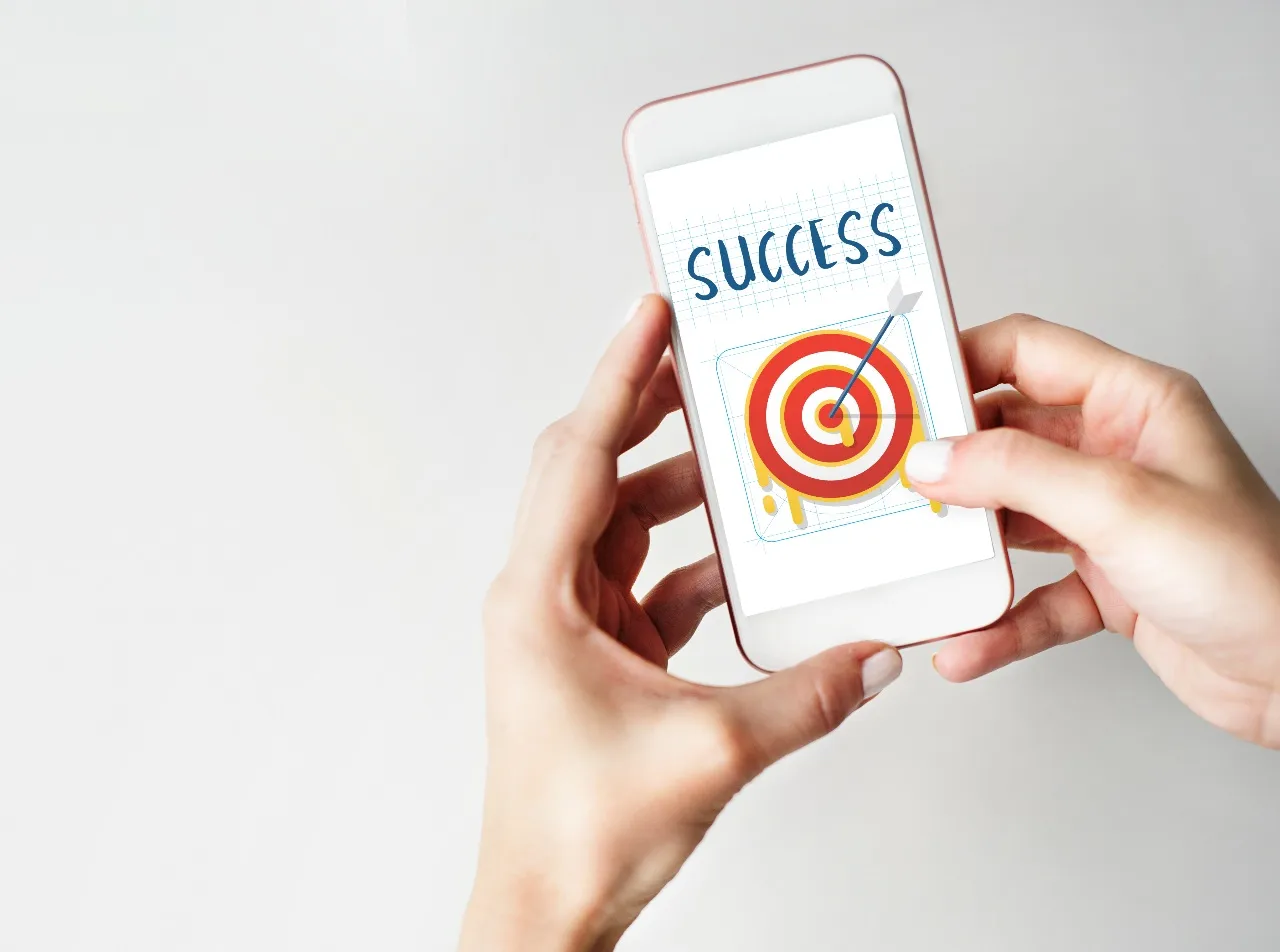Listen to article
In today’s dynamic business landscape, understanding multi-channel marketing performance is essential for staying competitive and maximizing ROI. But with so many channels to manage and track, it can be challenging to know where to focus your efforts and how to optimize your strategy.
Enter data-driven insights. By tracking the right metrics and analyzing performance across different channels, you can gain a clearer picture of what’s working, what’s not, and where to allocate your resources for the greatest impact.
In this article, we’ll dive into the latest statistics on multi-channel marketing performance, covering everything from AI’s growing influence and channel-specific customer acquisition to social media engagement, video marketing, and email effectiveness.
How AI is Revolutionizing Multi-Channel Marketing Strategies
The marketing world is witnessing a seismic shift as artificial intelligence reshapes the way content is created and campaigns are executed. Beyond just automating repetitive tasks, AI is unlocking unprecedented opportunities for more precise targeting, faster execution, and hyper-personalized messaging across multiple channels. As businesses compete for attention in a crowded digital ecosystem, leveraging AI-driven solutions has become not just beneficial but essential for scalable success. Let’s dive into some compelling statistics that showcase AI’s transformative role in multi-channel marketing.
- 35% of marketers are using AI-powered tools to craft content for their social media posts. Source
- 25% of marketers are employing AI to gain deeper insights into customer behavior and refine their audience segmentation. Source
- Over 50% of marketers plan to ramp up their investments in AI over the next year, signaling its rising importance. Source
- Among B2B organizations, 57% are utilizing generative AI to accelerate content production and build campaigns at scale. Source
Key Takeaway
AI’s rapidly expanding role in multi-channel marketing is not just a passing trend—it’s a game-changing force that’s redefining how brands connect with their audiences. By enabling marketers to produce tailored content faster and analyze consumer behaviors with greater accuracy, AI eliminates guesswork and ensures campaigns resonate across diverse platforms. As AI capabilities mature, marketers who fail to integrate these tools risk falling behind more agile competitors who maximize efficiency, personalization, and data-driven strategies. Whether you’re experimenting with generative AI for blog posts or using machine learning to refine segmentation, adopting a forward-thinking approach will be key to staying ahead in this AI-fueled landscape.
Pro Tip:
Start small but scale strategically. Test AI tools on specific campaigns—such as automating social media posts or creating audience personas—before rolling them out across your marketing operations. Platforms like Jasper, ChatGPT, and Hootsuite’s AI integrations can help you evaluate what works best for your unique needs without overwhelming your workflows.
AI to Supercharge Productivity and Multi-Channel Marketing ROI
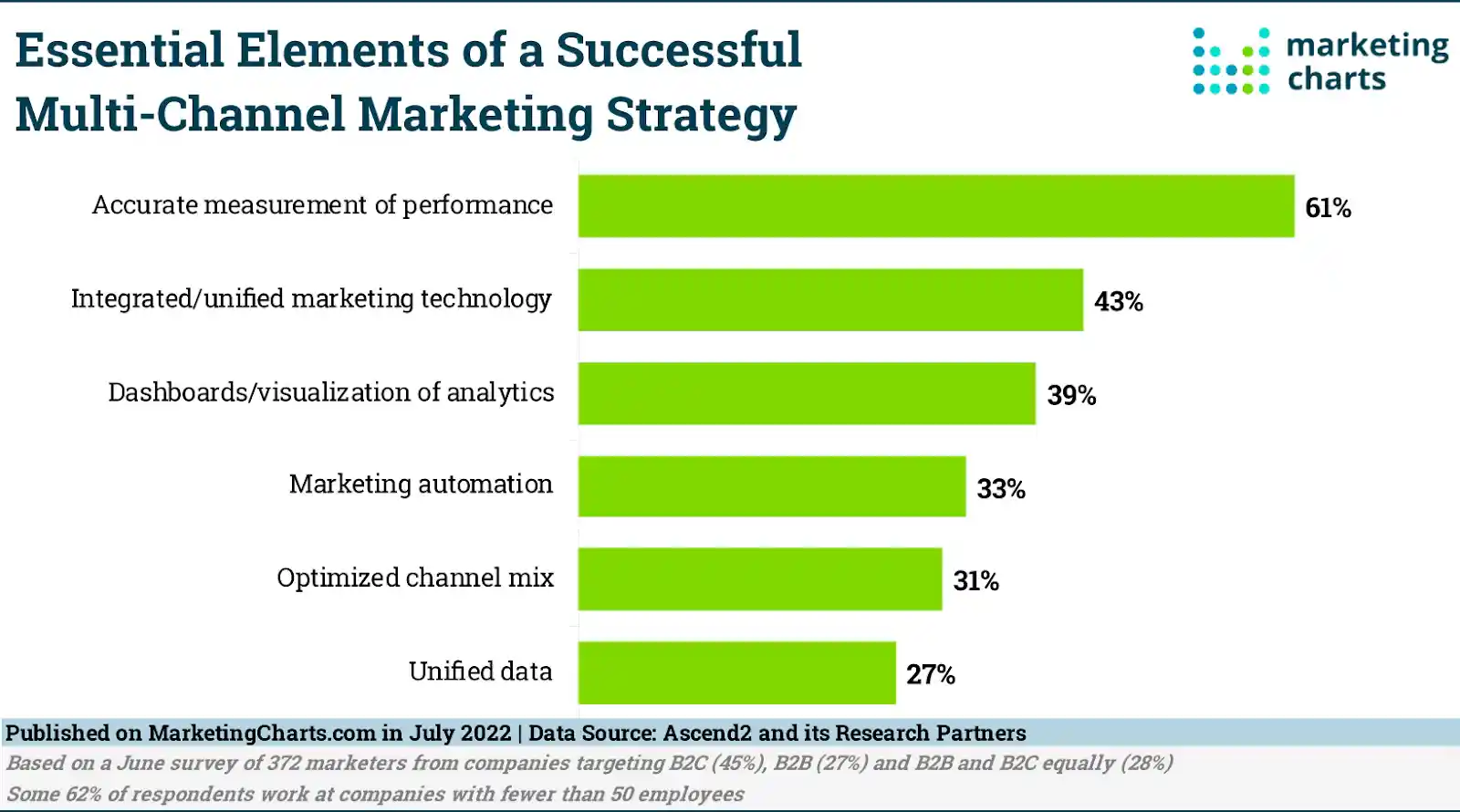
Source: Shopify
AI is transforming the marketing landscape, enabling brands to accomplish more with less effort. By automating manual processes, generating creative content, and analyzing vast amounts of data, AI empowers marketers to make more informed decisions, focus on impactful strategies, and craft hyper-personalized experiences across channels. As competition intensifies and customer expectations rise, adopting AI isn’t just an advantage—it’s becoming essential for staying relevant and competitive. Let’s explore just how much AI is reshaping productivity and engagement in multi-channel marketing.
- 76% of marketers cite AI’s ability to significantly enhance productivity and 52% recognize its role in improving customer engagement. Source
- Campaigns incorporating AI have seen a remarkable 70% average increase in ROI. Source
- 41% of marketers are using generative AI to create cutting-edge, innovative campaigns. Source
- 35% of marketers leverage generative AI to gain a competitive edge in their industries. Source
Key Takeaway
The numbers leave no room for doubt: AI is revolutionizing how brands approach multi-channel marketing by driving measurable gains in productivity, ROI, and creativity. This isn’t about replacing human ingenuity—it’s about enhancing it. From generating campaign ideas to optimizing cross-platform strategies, AI offers tools that can amplify the impact of marketing efforts while reducing resource strain. Early adopters are already reaping the rewards.
- Content marketing isn’t far behind, representing 17% of budget allocation. Source
- Investment in tools and technology accounts for 16% of budgets, underlining the necessity of MarTech in driving efficiency. Source
- Skilled personnel are still vital, with 12% of budgets dedicated to staffing. Source
- Over half (56%) of B2B marketers plan to increase investment in social media platforms, reflecting its continued relevance. Source
- Email marketing and paid search each are set to gain increased attention, with 40% of B2B marketers planning to boost budgets in these areas. Source
- Paid channels are a cornerstone of strategies, as evidenced by 84% of B2B marketers incorporating them. Source
- Among these paid channels, social media advertising and promoted posts lead the pack, used by 73% of marketers. Source
- Search engine marketing (SEM) and pay-per-click (PPC) follow closely, leveraged by 64% of paid-channel users. Source
- Digital display advertising and sponsorships each capture 62% of adoption among marketers utilizing paid channels. Source
- Other approaches like native advertising (34%), partner emails (30%), print ads (21%), and influencer marketing (16%) play smaller—but still strategic—roles. Source
Pro Tip:
Don’t try to overhaul your entire strategy overnight. Begin by pinpointing specific bottlenecks in your workflow—such as repetitive tasks or limited insight into customer data—and introduce AI-driven solutions to solve these issues. Tools like ChatGPT for content creation, HubSpot’s AI tools for automation, or Jasper for personalized messaging can help you test out AI’s potential without overcommitting resources.
Potential of AI-Powered Chatbots in Multi-Channel Marketing
In a landscape where seamless customer experiences are the cornerstone of effective marketing strategies, AI-powered chatbots are proving indispensable. These smart tools do more than just automate responses; they provide real-time engagement, uncover behavioral patterns, and enrich customer data, enabling marketers to hyper-personalize their outreach. For B2B marketers, where understanding complex buyer journeys is key, chatbots are fast becoming a must-have for lead generation and audience insight optimization.
- 57% of B2B marketers in the United States have integrated AI-enabled chatbots into their demand generation programs to gain deeper insights into their audience. Source
- B2B marketers in the U.S. who have incorporated chatbots into their marketing strategies have seen a notable increase in lead generation, with 26% reporting a 10-20% boost in lead volumes. Source
Key Takeaway
By reducing the lag between customer inquiries and responses, AI chatbots create meaningful touchpoints that capture interest when it’s at its peak. This makes them especially powerful for addressing early-stage leads and nurturing them through the sales funnel more efficiently. Beyond immediate convenience, the data collected through chatbot conversations can help marketers refine their messaging, personalize outreach, and anticipate future customer needs, creating a cycle of continuous improvement.
Pro Tip:
To go beyond basic chatbot functionality, integrate them with your CRM and analytics tools. This allows you to track user behavior across channels, refine audience segmentation, and deliver tailored experiences at scale. Also, consider training your AI chatbot with industry-specific language to resonate better with your target audience.
Top Channels for Customer Acquisition and Advertising Success

Source: FirstPageSEO
In the competitive landscape of multi-channel marketing, pinpointing which platforms deliver the best customer acquisition and ad performance is essential. With businesses increasingly allocating resources to digital advertising, understanding where to focus efforts can maximize ROI and create a well-rounded strategy. Whether you’re reaching professionals on LinkedIn, optimizing search campaigns on Google, or tapping into social media powerhouses like Facebook, each channel offers distinct advantages for connecting with your audience.
- LinkedIn proves indispensable for B2B marketers, with 65% of B2B companies successfully acquiring customers through LinkedIn ads. Source
- Google dominates the paid search market, as users are four times more likely to click on a Google ad compared to ads on other search engines. Source
- When it comes to PPC campaigns, nearly 80% of businesses focus their efforts specifically on Google Ads. Source
- Facebook still commands a major portion of paid social advertising, holding 21.5% of the social media PPC ad market. Source
Key Takeaway
The marketing landscape rewards those who know their platforms. Google and LinkedIn remain undisputed leaders in their respective niches, making them reliable bets for acquisition and ad campaigns. However, relying solely on these established channels could lead to missed opportunities with emerging platforms and untapped audiences. Diversification, informed by data and a clear understanding of your target customers, is the next frontier for gaining a competitive edge.
Pro Tip:
Go beyond allocating budgets based on industry trends. Regularly review campaign analytics, tailor strategies for each platform’s unique audience, and embrace A/B testing to uncover what resonates most with your customers. Additionally, monitor emerging digital advertising platforms like TikTok or Pinterest as potential growth opportunities.
Platform-Specific Strategies in Social Media Advertising
As businesses ramp up their digital advertising efforts, it’s not simply about being present on social media—it’s about being strategic. Each platform offers unique opportunities, audiences, and engagement levels, making it essential to understand where your budget can deliver the highest ROI. By spotlighting the numbers, we can see clear trends that underline why a customized, platform-specific approach isn’t just helpful—it’s crucial in the increasingly competitive social media ad space.
- Social media advertising accounts for 28.8% of global ad spend, solidifying its role as a vital advertising channel. Source
- Global social media ad spend is on track to reach $220 billion by 2024. Source
- TikTok leads in ad engagement, with 38% of its users open to advertisements, far surpassing the 4% general internet ad engagement rate. Source
- LinkedIn dominates the B2B landscape, with 84% of marketers ranking it as the most valuable platform for business. Source
- Consumers are increasingly active across multiple platforms, using an average of 6.7 social platforms per month. Source
Key Takeaway
These figures underscore a key takeaway: the most effective social media strategies rely on understanding platform-specific behaviors. TikTok’s unparalleled ad engagement is ideal for brands targeting younger, content-savvy audiences, while LinkedIn remains a stronghold for B2B campaigns. Additionally, with consumers diversifying their social media use, cross-platform strategies that adapt to the unique dynamics of each channel are increasingly vital. Savvy marketers recognize that blanket approaches no longer work—success lies in careful segmentation and adaptability.
For businesses seeking a holistic approach to their digital presence, implementing full-service marketing solutions can be a game-changer. By leveraging expertise across social media, content creation, and paid advertising, companies can seamlessly tailor strategies to meet platform-specific demands while maintaining a cohesive brand narrative.
Pro Tip:
Use analytics tools, like Google Analytics or Sprout Social, to monitor performance metrics on each platform, and adjust your content, segmentation, and ad spend accordingly. A data-driven approach ensures you’re not just visible but truly resonating with your audience.
Why Video is a Cornerstone for Lead Generation Success
In a world where attention spans are at an all-time low, video marketing has emerged as a game-changer for brands looking to make meaningful connections with their audience. Beyond its ability to entertain, video captivates, informs, and ultimately
The Financial Power of Email Marketing
In a rapidly diversifying digital landscape, email marketing has maintained its status as a cornerstone of multi-channel strategies, delivering some of the highest returns among marketing tactics. This isn’t just about nostalgia for the inbox; it’s about cold, hard numbers that consistently prove the value of email as a revenue driver. As businesses continue to refine their strategies, email marketing remains one of the most reliable ways to connect with audiences and convert interest into action.
- Email campaigns are recognized as a top revenue generator, with 14% of marketers stating that email campaigns provide the highest return on investment (ROI) compared to other marketing efforts. Source
- On average, email marketing delivers an impressive ROI of $36 in revenue for every dollar invested, making it a 36x return. Source
- ROI improvements are accelerating, with 52% of email marketers reporting a doubling of their campaign returns between 2022 and 2023, and an additional 5.7% experiencing a remarkable quadrupling of their ROI in 2023. Source
Key Takeaway
The takeaway here isn’t just that email marketing delivers—it’s that it continues to evolve and grow even more effective over time. Its high scalability, coupled with advancements in segmentation, automation, and personalization, ensures email remains a key player in driving revenue. For brands looking to optimize their multi-channel strategies, email offers a proven way to balance cost-effectiveness with exceptional results.
Pro Tip:
To ensure maximum performance, use advanced techniques like dynamic content personalization, A/B testing, and proper timing. Combining these tactics with a data-driven approach helps you stay ahead of trends while achieving increasingly higher ROI from your campaigns.
Data-Driven Insights on Channel Prioritization and Resource Allocation
With marketing budgets under constant scrutiny, knowing where to direct your efforts can mean the difference between success and wasted spend. The key lies in understanding which channels drive measurable outcomes and aligning your strategy with audience behavior. Whether it’s leveraging the timeless appeal of email, harnessing the targeting precision of paid search, or doubling down on emerging opportunities in social media, optimizing your multi-channel approach requires a blend of data and adaptability. Let’s take a closer look at how marketers are allocating resources and which strategies are dominating the landscape.
- Email marketing remains the gold standard for effectiveness, with 44% of marketers choosing it as their most impactful channel. Source
- Social media and paid search tie for second place, each being deemed the most effective by 16% of marketing professionals. Source
- Advertising commands the largest share of B2B marketing budgets, making up 19% of total spending. Source
- Content marketing isn’t far behind, representing 17% of budget allocation. Source
- Investment in tools and technology accounts for 16% of budgets, underlining the necessity of MarTech in driving efficiency. Source
- Skilled personnel are still vital, with 12% of budgets dedicated to staffing. Source
- Over half (56%) of B2B marketers plan to increase investment in social media platforms, reflecting its continued relevance. Source
- Email marketing and paid search each are set to gain increased attention, with 40% of B2B marketers planning to boost budgets in these areas. Source
- Paid channels are a cornerstone of strategies, as evidenced by 84% of B2B marketers incorporating them. Source
- Among these paid channels, social media advertising and promoted posts lead the pack, used by 73% of marketers. Source
- Search engine marketing (SEM) and pay-per-click (PPC) follow closely, leveraged by 64% of paid-channel users. Source
- Digital display advertising and sponsorships each capture 62% of adoption among marketers utilizing paid channels. Source
- Other approaches like native advertising (34%), partner emails (30%), print ads (21%), and influencer marketing (16%) play smaller—but still strategic—roles. Source
Key Takeaway
In a competitive marketing world driven by data, the budgetary focus on digital-first channels like email, social media, and paid search mirrors broader trends of rising customer expectations for relevance and immediacy. What stands out is not merely the channels marketers are using, but how they’re balancing tried-and-true methods (like email marketing) with newer, exploratory opportunities (think native ads or influencer collaborations). To thrive, it’s vital to align your marketing spend with both what works today and what could work tomorrow—keeping the fine line between innovation and ROI-driven decisions top of mind.
Pro Tip:
Regularly audit the performance of each marketing channel in your portfolio as customer behaviors and industry trends evolve. Use these insights not just to shift budget allocations but also to refine creative executions and targeting strategies within the most effective platforms. This way, you’ll not only improve ROI but also future-proof your strategy against market disruptions.
Overcoming Content Creation Hurdles with the Power of Blogging
For B2B marketers, crafting content that strikes a chord with their audience isn’t just a priority—it’s a necessity. However, the challenge lies in creating content that not only engages but also offers real value in a crowded digital landscape. Blogs continue to serve as a cornerstone for effective content marketing, acting as a versatile platform for storytelling, thought leadership, and organic lead generation. Backed by the right strategies, blogs can transform content creation challenges into opportunities for meaningful connection.
- A notable 57% of B2B marketers admit that developing content that resonates with their audience remains a significant challenge. Source
- Alarmingly, 58% of content provided to customers is deemed hollow, signaling an urgent need for content strategies rooted in depth and value. Source
- Blogs retain their dominance, with 90% of content marketers integrating them as a vital part of their marketing strategy. Source
Key Takeaway
The numbers make it clear—creating relevant, impactful content isn’t just a persistent challenge; it’s a critical area where many marketers miss the mark. With over half of content being perceived as hollow, audiences are craving substance over fluff. Blogs remain the foundation for building deeper connections with your target market, offering a rare opportunity to address their concerns, educate them, and add tangible value. By refining your blog strategy to focus on quality, originality, and audience-centric content, you can turn your blog into both a traffic magnet and a trust-building tool.
Pro Tip:
Don’t just aim to “create content”—aim to solve problems. Use tools like customer surveys, social listening, and analytics to zero in on topics that matter most to your audience. Combine this with a mix of SEO optimization and strategic promotion across multiple channels to amplify the reach of your blog and solidify your brand’s authority.
Striking the Right Balance Between PPC and SEO
When it comes to digital marketing, deciding how to split your budget between PPC and SEO can feel like walking a tightrope. PPC offers rapid visibility and quick wins, while SEO builds sustainable, long-term growth. But here’s the twist: these two strategies aren’t rivals—they’re partners. Leveraging insights from one can help amplify the effectiveness of the other, creating a holistic approach to dominating search engine results. Let’s explore the numbers behind this dynamic relationship:
- Small to medium-sized businesses typically spend seven times more on PPC than on SEO. Source
- A significant 86.5% of respondents base their SEO efforts on insights gained from PPC advertisements. Source
Key Takeaway
These data points reveal an interesting narrative: while businesses disproportionately invest in PPC for its short-term impact, many marketers recognize the goldmine of data PPC offers to strengthen SEO strategies. This interplay ensures that money spent on PPC doesn’t just drive immediate traffic but also enhances organic performance over time.
Pro Tip:
Build a feedback loop between your PPC and SEO teams. Use high-converting keywords from PPC campaigns to optimize your organic content strategy, and apply insights from SEO performance to refine your PPC targeting. This synergy ensures you’re not just chasing short-term gains but creating a balanced strategy that maximizes ROI across both paid and organic search.
For businesses looking to get the most out of their digital marketing efforts, exploring complementary tactics like SEO and PPC is just one piece of the puzzle. To ensure a comprehensive approach, you might also consider outsourcing SEO services to professionals who can help fine-tune your strategy while saving time and resources.
Conclusion
The data paints a vivid picture: multi-channel marketing performance is no longer about guesswork—it’s about leveraging the right tools, platforms, and strategies to maximize results. From AI-driven content creation and chatbot-powered insights to the enduring value of email marketing and video campaigns, marketers today have unprecedented opportunities to supercharge their campaigns. However, the true secret to success lies in balancing these powerful tools with a clear understanding of audience behavior and channel effectiveness.
As the statistics show, platforms like LinkedIn, Google Ads, and TikTok each offer unique strengths, while traditional strategies like email marketing continue to deliver unmatched ROI. The challenge for marketers isn’t just adopting these tools—it’s using them in harmony to create a cohesive, data-driven strategy. Whether it’s refining budget allocation, enhancing personalization, or optimizing content for engagement, the key is adaptability and continuous learning.
Ready to put these insights into action? If you’re ready to supercharge your business, don’t hesitate to get in touch with our full-service marketing pros for a free quote. Let’s create a multi-channel strategy that drives measurable growth and keeps you ahead of the competition.
About What the Data Says About Multi-Channel Marketing Performance
This guide was written by the Scopic Studios team and reviewed by Araksya Hakobjanyan, SEO Lead at Scopic Studios.
Scopic Studios delivers exceptional and engaging content rooted in our expertise across marketing and creative services. Our team of talented writers and digital experts excel in transforming intricate concepts into captivating narratives tailored for diverse industries. We’re passionate about crafting content that not only resonates but also drives value across all digital platforms.
Note: This blog’s feature image is sourced from Freepik.




